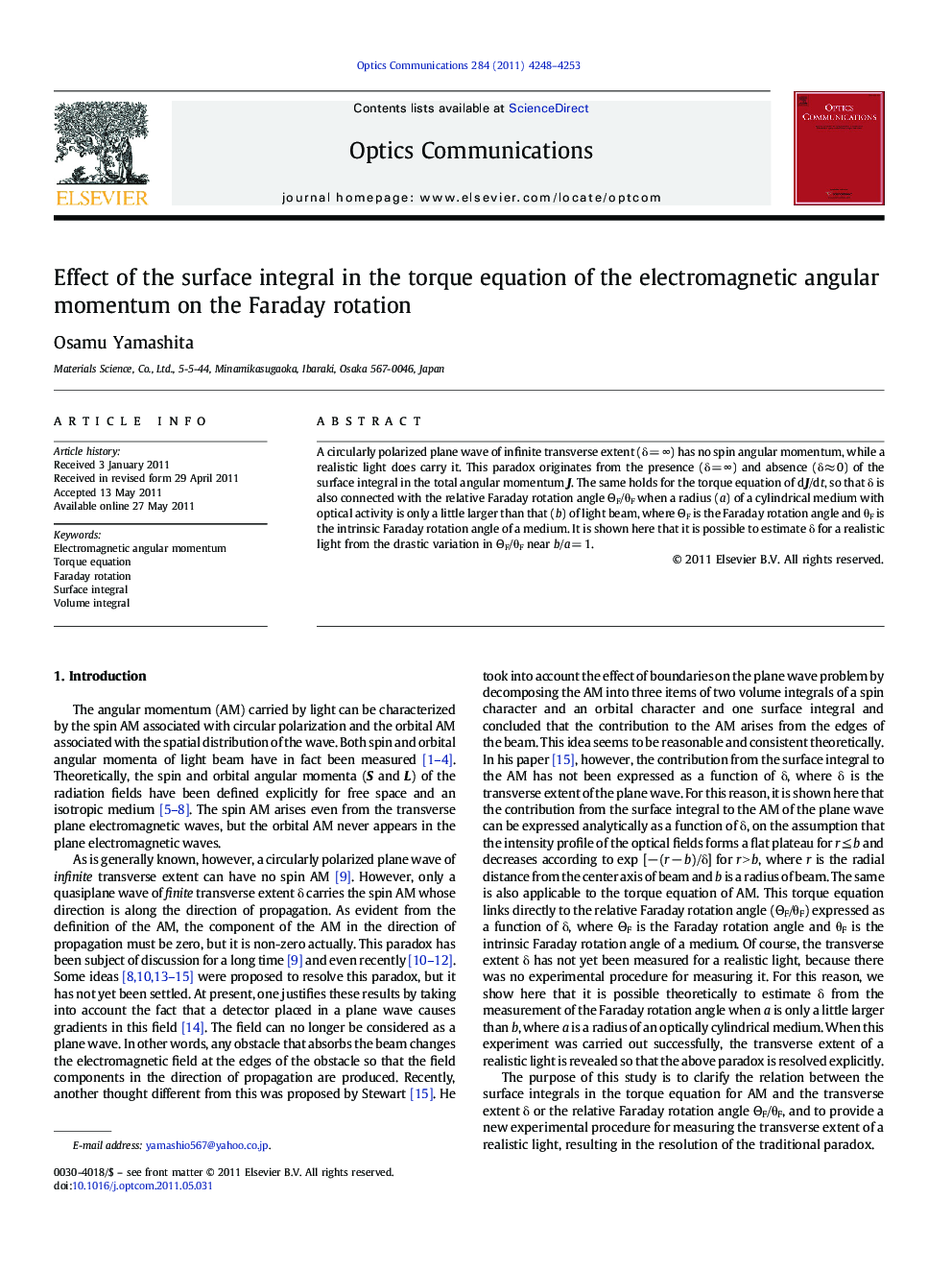| Article ID | Journal | Published Year | Pages | File Type |
|---|---|---|---|---|
| 1537071 | Optics Communications | 2011 | 6 Pages |
Abstract
A circularly polarized plane wave of infinite transverse extent (δ = ∞) has no spin angular momentum, while a realistic light does carry it. This paradox originates from the presence (δ = ∞) and absence (δ ≈ 0) of the surface integral in the total angular momentum J. The same holds for the torque equation of dJ/dt, so that δ is also connected with the relative Faraday rotation angle ΘF/θF when a radius (a) of a cylindrical medium with optical activity is only a little larger than that (b) of light beam, where ΘF is the Faraday rotation angle and θF is the intrinsic Faraday rotation angle of a medium. It is shown here that it is possible to estimate δ for a realistic light from the drastic variation in ΘF/θF near b/a = 1.
Keywords
Related Topics
Physical Sciences and Engineering
Materials Science
Electronic, Optical and Magnetic Materials
Authors
Osamu Yamashita,
